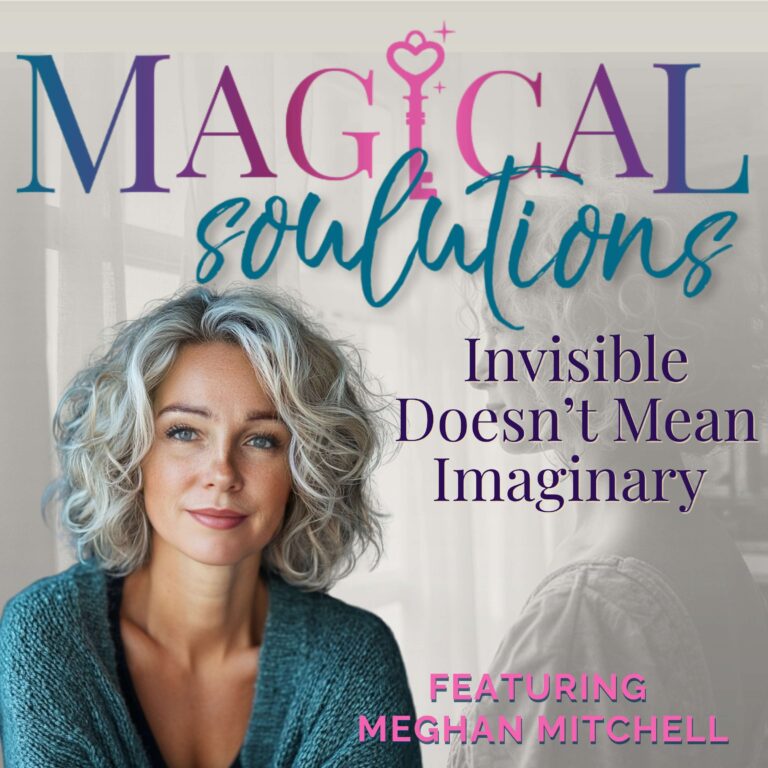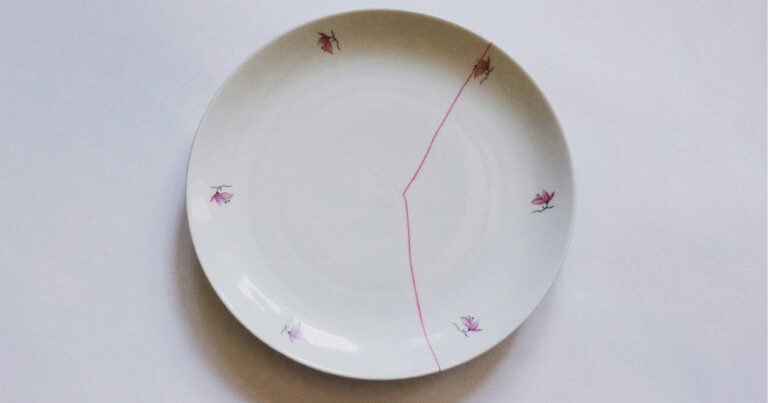Invisible Doesn’t Mean Imaginary: A Guide to Living with Unseen Disabilities
What if the things that make life hardest to explain are also the gateways to your deepest truths? This question sits at the heart of our latest Magical Soulutions Podcast episode, “Invisible Doesn’t Mean Imaginary.”
In a world that often prioritizes what can be seen, this is a space to explore the unseen but deeply felt parts of ourselves. We’re talking about the silent stories you carry: the chronic pain that doesn’t leave scars, the mental health struggles you navigate alone, and the neurodivergence that shapes your world in profound ways.
This episode is an invitation to find the magic in your own truth, to heal what others can’t see, and to validate the very real experiences that live below the surface. Because being unseen doesn’t mean being unworthy, and an invisible struggle is never imaginary.
Understanding Invisible Disabilities
An invisible disability isn’t invisible to the person living with it. While society often equates disability with visible signs like a wheelchair, a white cane or a cast, the reality is far more complex. We’re talking about a vast range of conditions that don’t always show up on the surface: chronic illnesses, neurodivergence, trauma, PTSD, and mental health conditions. These experiences profoundly shape our daily lives, even if they don’t leave physical proof for others to see.
The Problem of Perception
Because of this, the world so often dismisses these struggles with phrases like, “You don’t look sick,” or “But you’re so normal!” This reliance on visible proof creates a significant problem. It leads to feelings of isolation and self-doubt, forcing individuals to constantly justify their own experience. The challenges are real, from pain flares and chronic fatigue to sensory overload and executive dysfunction, but when they aren’t believed, the emotional toll can be immense.
The Double Labor
This is where the concept of “the double labor” comes in. For those with invisible disabilities, you aren’t just managing your symptoms; you’re also managing other people’s perceptions. Imagine the energy it takes to simply exist, and then add the exhausting performance of appearing “normal” just to navigate daily interactions. This isn’t just tiring; it’s deeply discouraging and disempowering.
As we shine a light on this, it’s also a powerful reminder of Disability Pride Month (July), a time to celebrate the full spectrum of human diversity. For those with invisible disabilities, this is a moment to reclaim narratives and challenge misconceptions. It’s an opportunity to shift from shame to celebration and to proudly affirm: “My experience is valid. My struggles are real. And my life, with all its unique challenges and strengths, is worth celebrating.“
Reframing the Narrative
But what if we could reframe this entirely? In metaphysics, we talk about unseen forces—intuition, energy, spirit—and the most powerful transformations often happen below the surface. Invisible doesn’t mean imaginary; it means sacred. It’s a call to turn inward and honor our needs, not to seek external validation. You don’t need a permission slip to honor your experience. You don’t need a diagnosis to validate your worth. And you don’t have to wait until someone else sees your pain to begin healing.
Living with an Unseen Diagnosis
My story is one I share often because it’s a testament to the power of seeing your own truth, even when no one else can. I wasn’t officially diagnosed with ADHD until I was 30 years old. For most of my life, I was the overachiever, the people-pleaser, and the one who pushed through. You know, the high-functioning persona you’ve probably seen before in those you don’t know are actually neurodivergent. But behind the scenes, there was a different reality: time blindness, shame spirals, lost keys, constant distractions, and a nervous system on high alert. I was masking who I really was, trying desperately to keep up with a world that felt designed for everyone but me.
Finding Validation
For years, I told myself I was just lazy, flaky, or too sensitive. The struggle felt like a personal failing. My first real moment of validation came in my twenties when my mother gave me a book that felt like a lifeline: You Mean I’m Not Lazy, Stupid or Crazy?! by Kate Kelly and Peggy Ramundo. It was groundbreaking, not only for giving a name to what I was experiencing but also for highlighting that ADHD in girls and women was largely undiscussed. It was the first time I truly felt seen, even just by a book.
Expert Insights
As I delved deeper into my neurobiology, I found incredible insights from several experts who helped me reframe my journey. The work of Dr. Daniel Amen helped me understand the tangible, biological underpinnings of my ADHD, showing me it wasn’t a moral failing. Dr. Gabor Maté’s perspective on trauma’s impact on our nervous systems resonated deeply, offering another layer of understanding for my chronic challenges.
Then, I found another group of pioneers who helped me apply this knowledge to my life. The ADHD research from Dr. Edward Hallowell and Dr. John Ratey taught me to reframe my “different wiring” from a deficit to a strength. And finally, Sari Solden, a psychotherapist specializing in women with ADHD, helped me unravel years of internalized shame, showing how my perfectionism and people-pleasing were often masking my true struggles.
It wasn’t until a therapist looked me in the eye while we were working through PTSD and said, “You’re not broken. You’re just wired differently,” that something truly broke open in me. It wasn’t a painful moment, but a freeing one. It was an invitation to stop fighting myself and start understanding who I really am. Invisible doesn’t mean imaginary; it means I’ve learned to navigate this world with radical self-compassion and a toolkit full of strategies that work for me.
An Invitation Inward
Now, let’s move from the conversation to the practice. This section is a sacred pause, a moment for you to truly feel and internalize the truths we’ve been discussing. These aren’t just one-time exercises; they are tools you can carry with you long after this post.
Journaling Prompt
Take a deep breath and allow these questions to gently land within you. Write your responses down in your journal or on a piece of paper, without judgment.
Or, an Alternative Practice
If journaling feels too much today—and that is perfectly okay—I offer this simpler, gentle practice. This is about meeting yourself exactly where you are.
- Place your hand over your heart and feel the warmth, the steady beat of your own life force.
- Close your eyes gently if it feels safe.
- Now, whisper to yourself, or simply hold these truths in your mind: “I don’t need to be seen to be real. I am allowed to exist as I am. I am not broken. I am whole.”
Stay here for a few breaths. Let that truth sink into your bones and feel it resonate in every cell of your being. This isn’t about fixing anything; it’s about acknowledging and affirming your inherent worth, exactly as you are.
Practicing Compassion Without Confirmation
So, how do we take this knowing and carry it into our daily lives, not just for ourselves, but for each other? This week, I invite you to practice compassion without needing confirmation. What the heck does that mean? It means extending grace to others without requiring them to justify their struggles. Just as we’ve explored the importance of honoring our own unseen experiences, let’s extend that same grace outward.
When you see someone cancel plans, miss a deadline, or seem “off,” remember: you might be witnessing a soul navigating something invisible. It could be a flare-up of an autoimmune condition, a wave of sensory overload, the quiet weight of anxiety, or something else entirely. Instead of judgment, offer grace. To them, and to yourself, for the moments when you too are unseen.
And if you are the one carrying the unseen, know that this space, this podcast, this community—sees you. We believe you. We honor your story. You’re not alone.
Unseen struggles are real, and they are sacred. My hope is that this episode has given you permission to honor your own story and to extend that same grace to others. By reframing invisible disabilities not as a lack, but as a source of deep wisdom, we can begin to heal and thrive exactly as we are.
And remember, beautiful soul: ✨ You are magical. ✨ You are the soulution.
Listen to the Full Episode

Magical Soulutions™ is the podcast for soulful seekers, sacred misfits, and quietly bold humans walking the in-between. Host Meghan Mitchell weaves story, soul wisdom, and practical magic to help you come home to yourself — one soul beat and sacred remembering at a time. Whether you’re exploring intuition, grief, purpose, or your own spiritual messiness, this space offers grounded, soulful guidance for living a life aligned with your inner truth.
Episode 6: Invisible Doesn’t Mean Imaginary – Living with Invisible Disabilities
What if being unseen doesn’t mean being unworthy? What if the stories you carry in silence are the ones that hold the most magic?
In this episode, we explore the world of invisible disabilities — the chronic conditions, neurodivergence, trauma, and mental health experiences that aren’t always seen, but are deeply felt.
Rev. MK Mitchell invites you into a sacred, soul-validating conversation about the “double labor” of managing symptoms and others’ perceptions, the emotional toll of being disbelieved, and the powerful shift from shame to soul celebration.
Together, we reclaim the truth:
- Invisible doesn’t mean imaginary.
- You are not broken — you are wired with magic.
- Your experience matters.
Journal Prompts:
- What parts of myself have I hidden because others couldn’t see or understand them?
- What would it feel like to honor them as sacred instead of shameful?
Soul Invitation:
This week, practice compassion without needing confirmation. Extend grace to others and yourself even when you don’t know the full story. Everyone is navigating something.
🌱 Resources & Mentions:
- You Mean I’m Not Lazy, Stupid or Crazy?! by Kate Kelly & Peggy Ramundo
- Driven to Distraction by Edward Hallowell & John Ratey
- Women with Attention Deficit Disorder: Embracing Disorganization at Home and in the Workplace by Sari Solden
- Healing ADD Revised Edition: The Breakthrough Program that Allows You to See and Heal the 7 Types of ADD by Dr. Daniel Amen
- Scattered Minds: The Origins and Healing of Attention Deficit Disorder by Dr. Gabor Maté
🧭 Join the Magical Soulciety
Connect with kindred spirits and find more soul-nourishing resources at magicalsoulutions.com
- Subscribe to the podcast
- Share with a fellow MOMO
- Leave a review if this episode touched your soul
- Join the conversation on the blog, it drops on Thursdays
Listen now and remember:
You are magical. You are the soulution.

Thank you for joining me in this sacred conversation. If this episode resonated with you, I invite you to take the next step:





